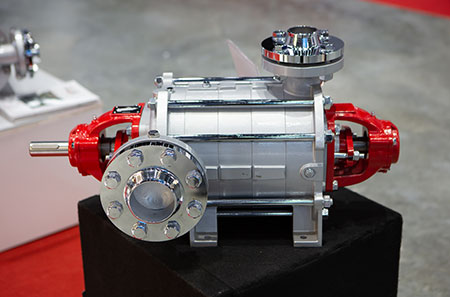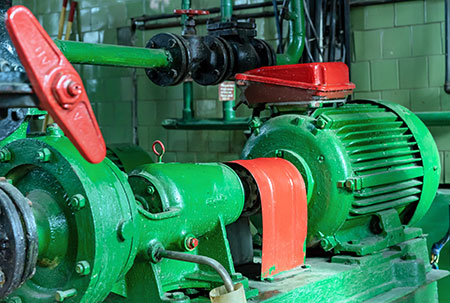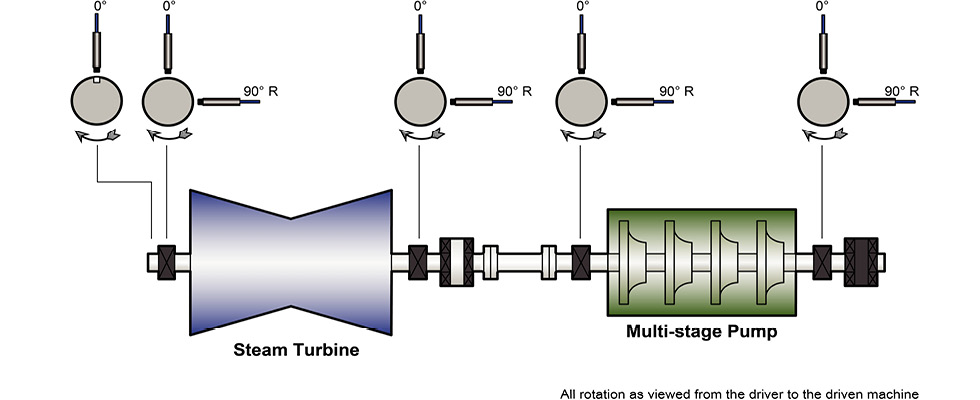
At the heart of most industrial facilities lies a critical pump service that sometimes goes unnoticed until something goes wrong: the boiler feed.
Boiler feedwater pumps deliver water to boilers at precise pressures and temperatures, forming the foundation of reliable steam and power generation. When they perform at peak efficiency, they enable smooth operation throughout the facility. When they falter, the operation of the entire facility is put at risk.
Today, the industry faces unprecedented challenges. Rising fuel costs, stringent environmental regulations and market competition demand ever-higher levels of efficiency and reliability. Modern boiler feed pumps help address these challenges through advanced design features and control systems.
Plant managers and maintenance professionals who understand how to optimize these systems can significantly impact their facility’s bottom line while supporting sustainability goals.
Engineering Excellence: Pump & Mechanical Seal Design
For many years, utility power plants have deployed highly-engineered, high pressure pumps, using specialized materials like 12% chrome stainless steel and sophisticated control and monitoring systems to ensure reliable operation of their boiler feed systems.
Over time, mechanical seal flush plans have evolved to become more efficient. With the development of API Plan 23 to replace Plan 21, which required the continuous cooling of feedwater from operating temperature, today’s seal chamber is now closed off with a restriction bushing while a fixed volume of fluid is continually recirculated through a cooler, resulting in dramatically reduced temperatures and water consumption.
Elastomer choices have also expanded to include not only ethylene propylene diene monomer (EPDM), but also tetrafluoroethylene propylene and various perfluoroelastomers—all excellent choices for delivering higher temperature resistance and longer operating life in boiler feed services.

The specifications governing industrial steam generation facilities are less stringent than those for utility power plants, although the reliable operation of those systems is still critical. Pump designs can vary widely in these facilities. Some of the most common pump configurations include horizontal multistage, vertical in-line multi-stage, single-stage integrally-geared, pitot tube or positive displacement pumps. Materials of construction of these pumps are often 316 stainless steel (316SS) or cast steel as opposed to 12% chrome. Manufacturing facilities utilize packaged boiler systems as well. These systems are convenient, compact and typically require less time to install, which presents cost savings.
Industrial plants often are constrained by low deaerator heights, which limit net positive suction head available (NPSHa) and make suction transients, or feedwater system upsets, more likely to occur. Users must carefully consider the net positive suction head (NPSH) requirement of various pump types, as well as the comparative robustness of their designs and their ability to withstand such upsets.
Operational Intelligence: Speed Control & System Protection
In recent years, we have seen increasing adoption of variable speed technology. Unlike traditional throttling methods that waste energy, variable speed drives allow pumps to match output precisely to system demand, improving pump efficiency and longevity.
The boiler controller can vary the speed of the pump instead of actuating the boiler fill valve. A boiler feed system curve is composed almost entirely of static head, so the variable speed range is relatively narrow, but a variable frequency drive (VFD) can still have a significant impact on power requirement. When operating at reduced speeds during periods of lower demand, power consumption drops dramatically—following the affinity laws, a modest 20% reduction in speed can result in nearly 50% power savings. Additionally, the reduced stress on bearings, seals and wear components extends their service life.
Protection against low-flow conditions remains crucial for reliable operation, although industrial facilities’ minimum flow protections sometimes are not present. The boiler feed pumps of packaged boiler systems often start and stop continuously as steam demand varies. This will cause premature wear of the pumps. Facilities that operate this way and wish to extend the life of their boiler feed pumps should add minimum flow protection in order to continuously operate their boiler feed pumps and avoid wear caused by frequent starts
and stops.
Minimum flow protection can be accomplished in a variety of ways, such as with a fixed bypass orifice, an automatic recirculation (ARC) valve or reverse acting control valves. Depending on the chosen method, the pump sizing may be impacted, as continuous bypass must satisfy not only the forward demand to the boiler but also the continuous minimum flow. These minimum flow protection systems must then be integrated into a plant’s inspection and maintenance schedule so they continue to operate optimally and effectively.
Predictive Care: Maintenance & Environmental Stewardship
The maintenance landscape has evolved significantly from traditional approaches. Gone are the days of running equipment to failure or relying solely on time-based maintenance schedules. Today’s sophisticated monitoring systems track vibrations, performance metrics and even oil conditions, enabling maintenance teams to detect and address developing issues before they cause catastrophic failures. This approach not only prevents unexpected downtime but also optimizes maintenance resources by ensuring interventions occur only when necessary.

More efficient steam and power generation systems play a role in meeting sustainability goals by reducing overall fuel consumption and greenhouse gas emissions. Their ability to adapt to varying loads also supports the integration of renewable energy sources, helping facilities transition toward cleaner power generation methods. Energy recovery features and optimized designs further contribute to resource conservation efforts.

The future of power generation depends on our ability to continuously improve the efficiency and reliability of these critical systems while meeting stringent environmental requirements.

